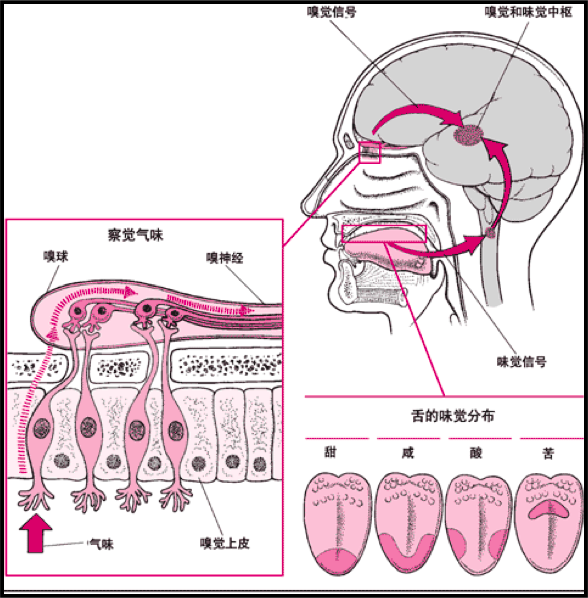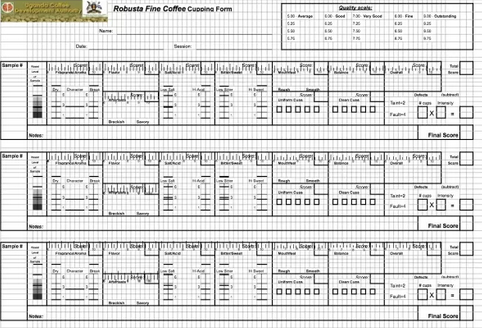Drink coffee with five senses and teach us how to taste coffee with different senses!

For professional baristas, please follow the coffee workshop (Wechat official account cafe_style)
We often think that tasting food is based on the sense of taste, but in fact, some aromas are put into the mouth and reach the nose, while others are sensed by touch. Studies have also confirmed that every sense of taste, including sight, hearing, touch, smell and taste, will affect the taste.
Drinking coffee with five senses will lead you to understand how we can taste coffee with different senses!
# drink coffee with five senses
Part 1 smell-train your coffee nose
Have you ever heard of the wine tasting's "wine nose"? Keep all kinds of aromas in a small glass bottle, like perfume, as a tool for training to smell incense, and refer to it when experiencing wine or whisky.
In fact, coffee also has a "coffee nose" smell bottle. The most common is the Le nez du Cafe, which divides coffee flavors into 36 flavors according to the American Coffee Association (SCAA) and makes them into 36 coffee-based scent bottles for training or collection.
Le nez du Cafe Coffee nose 36 Coffee smell bottles
1. Earthy flavor, 2. Potato, 3. Green beans, 4. Cucumber, 5. Straw, 6. Western fir, 7. Cloves, 8. Pepper, 9. Coriander seeds, 10. Vanilla, 11. The scent of roses, 12. Coffee flowers, 13. Coffee pulp peel, 14. Blackcurrant, 15. Yellow lemon, 16. Apricot, 17. Apple, 18. Cream, 19. Honey, 20. Leather, 21. Indian rice, 22. Toast, 23. Mai Xiang, 24. Maple syrup, 25. Caramel, 26. Dark Chocolate, 27. Roasted almonds, 28. Roasted peanuts, 29. Roasted hazelnut, 30. Walnut, 31. Boiled beef, 32. Smoky, 33. Cut tobacco, 34. Roasted coffee beans, 35. The taste of potion, 36. Rubber smell
Although we are not cup testers and do not need such professional training, try to smell it with your nose before taking your first sip of coffee.
Because when tasting food, the sense of smell is as important as the sense of taste, just like when you catch a cold, your nose is stuffy and the food is boring. So don't forget to smell the aroma of coffee when drinking coffee.
The aroma of freshly brewed coffee is the first feeling when tasting it. If you smell the aroma through your nose, you can feel the ever-changing flavor of coffee. In a cup of coffee, you can often smell a variety of aromas: flowers, fruit acid, earth herbs, caramel and so on. This is the charm of coffee.
Part 2 Taste-Rock your tongue
Taste is one of the most important senses for us to taste food. From putting it in the mouth to pushing it into the throat, this short distance of 10 centimeters dominates the important way to feel the taste of food.
The sense of taste depends most on the tongue. The four basic tastes include bitter, salty, sour and sweet. Different areas of the tongue have different sensitivity to taste, and taste buds distributed throughout the tongue can feel all kinds of taste.
The taste buds on the tongue can quickly connect all the passing food to the brain immediately, record all the tastes and save them, and even remember the taste of a certain food when it comes to it, which is the reason for "hoping for plums to quench thirst".
So when drinking coffee, don't swallow it in a hurry, leave it in the front of your mouth and let the detector on your tongue analyze the different tastes: sour, sweet and bitter? What's the acid? Sour before sweet or bitter before sweet?
Then let the smell of coffee bloom in the mouth and nose. After swallowing, you can feel the aftereffect of the coffee liquid flowing down the throat and the aroma left in the mouth. With the saliva swallowing, you will also feel the aftertaste gushing out of the throat.
Part 3 Touch-Coffee temperature
We often use some adjectives to describe food: crisp, tender, sticky, Q-flick, silky. In addition to the ups and downs, we also care about the feeling of the tongue, lips and teeth, which is the taste of the food. at the same time, our tongue will also sense the temperature of the food, and the taste and temperature experience come from the sense of touch. including astringent, hemp, spicy feeling is also a kind of touch!
When drinking coffee, we will feel the "consistency" after the entrance of the coffee, including a light water-like light, or thick taste. Some coffees make people feel "thick", while others feel silky and smooth.
Different brewing methods will also affect the consistency of coffee, such as hand-brewed coffee filter paper will filter out the coffee oil, drink more light, taste Italian coffee can feel the thicker fat.
Of course, the moment you hold the coffee cup in your hand, the tactile experience has already begun.
Important Notice :
前街咖啡 FrontStreet Coffee has moved to new addredd:
FrontStreet Coffee Address: 315,Donghua East Road,GuangZhou
Tel:020 38364473
- Prev

About Robusta Q-Grader, Robusta Robusta Grader exam
To be a Robusta Q-Grader, you must pass all the Robusta Grader exams. In general, the test method is similar to the Arabica Q-Grader test, but there are different concepts or formulas. For example, sensory skills sensory skills and organic acids match matching pairs organic acids. The first part is the knowledge of Robusta coffee theory.
- Next

Coffee shop menu: latte, cappuccino, mocha, Maggialdo … How to choose with a dazzling array?
For the exchange of professional baristas, please follow the coffee workshop (Wechat official account cafe_style). There are many cafes everywhere, but when you pick up the coffee menu, how to choose a dazzling variety of lattes, cappuccinos, mochas and Macchiato? What kind of coffee do you like? Look at the picture above and it will be clear! a. Cappuccino blossoms in Cappiccino coffee
Related
- Beginners will see the "Coffee pull flower" guide!
- What is the difference between ice blog purified milk and ordinary milk coffee?
- Why is the Philippines the largest producer of crops in Liberia?
- For coffee extraction, should the fine powder be retained?
- How does extracted espresso fill pressed powder? How much strength does it take to press the powder?
- How to make jasmine cold extract coffee? Is the jasmine + latte good?
- Will this little toy really make the coffee taste better? How does Lily Drip affect coffee extraction?
- Will the action of slapping the filter cup also affect coffee extraction?
- What's the difference between powder-to-water ratio and powder-to-liquid ratio?
- What is the Ethiopian local species? What does it have to do with Heirloom native species?

